Themed collection Strategies for Cellular Target Identification of Natural Products

Editorial: Strategies for cellular target identification of natural products
Daniel Romo and Jun Liu introduce the Natural Product Reports themed issue on ‘Strategies for cellular target identification of natural products’.
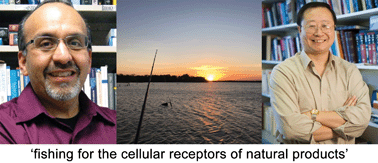
Nat. Prod. Rep., 2016,33, 592-594
https://doi.org/10.1039/C6NP90016J
Integrated profiling methods for identifying the targets of bioactive compounds: MorphoBase and ChemProteoBase
Target identification of new bioactive compounds has been achieved by both our direct and indirect approaches. Here, we highlight the utility of the latter approaches, MorphoBase and ChemProteoBase.
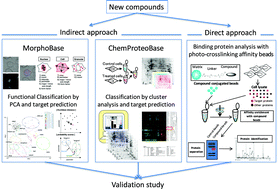
Nat. Prod. Rep., 2016,33, 621-625
https://doi.org/10.1039/C5NP00106D
Identifying the cellular targets of natural products using T7 phage display
A description of the T7 phage biopanning procedure is provided with tips and advice suitable for setup in a chemistry laboratory.
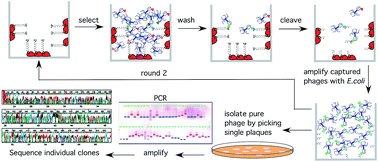
Nat. Prod. Rep., 2016,33, 626-636
https://doi.org/10.1039/C5NP00128E
Natural products-prompted chemical biology: phenotypic screening and a new platform for target identification
This highlight focuses on our recent discoveries and chemical genetics approaches for bioactive microbial metabolites that target cancer cells, the cancer microenvironment, and cell membrane signalling. In addition, the development of two new platforms to identify the cellular targets of these molecules is also discussed.
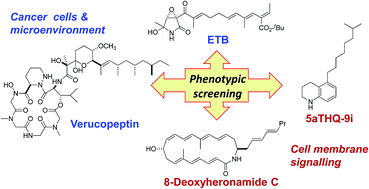
Nat. Prod. Rep., 2016,33, 648-654
https://doi.org/10.1039/C5NP00120J
Discoveries, target identifications, and biological applications of natural products that inhibit splicing factor 3B subunit 1
The natural products FR901464, pladienolide, and herboxidiene were discovered as activators of reporter gene systems. They were later found to inhibit the spliceosome.
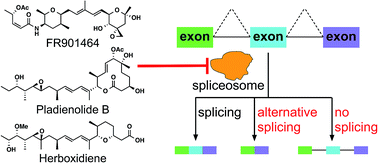
Nat. Prod. Rep., 2016,33, 637-647
https://doi.org/10.1039/C5NP00110B
I only have eye for ewe: the discovery of cyclopamine and development of Hedgehog pathway-targeting drugs
Outbreaks of cyclopic lambs during the 1950s led to the discovery of cyclopamine and new anticancer therapies.
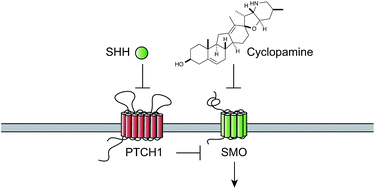
Nat. Prod. Rep., 2016,33, 595-601
https://doi.org/10.1039/C5NP00153F
Target identification of natural products and bioactive compounds using affinity-based probes
Direct capture of drug–target complexes in situ by using affinity-based probes allows target identification of natural products and bioactive compounds, even if the binding is reversible with moderate affinity.
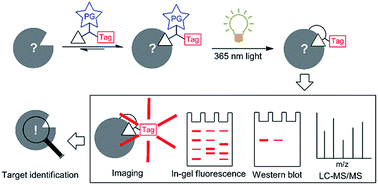
Nat. Prod. Rep., 2016,33, 612-620
https://doi.org/10.1039/C5NP00101C
Synthesis and mode of action of oligomeric sesquiterpene lactones
In this highlight we describe two case studies from our laboratory, involving the biomimetic syntheses and the biological mechanism elucidation of the bioactive oligomeric sesquiterpenoids, (+)-ainsliadimer A (4) and (−)-ainsliatrimer A (5).

Nat. Prod. Rep., 2016,33, 602-611
https://doi.org/10.1039/C5NP00089K
Chemical proteomics approaches for identifying the cellular targets of natural products
This review focuses on chemical probes to identify the protein binding partners of natural products in living systems.
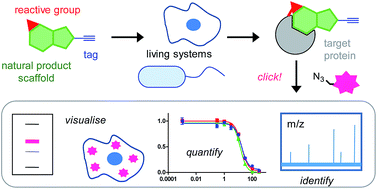
Nat. Prod. Rep., 2016,33, 681-708
https://doi.org/10.1039/C6NP00001K
Advances in identification and validation of protein targets of natural products without chemical modification
This review focuses on and reports case studies of the latest advances in target protein identification methods for label-free natural products. The integration of newly developed technologies will provide new insights and highlight the value of natural products for use as biological probes and new drug candidates.
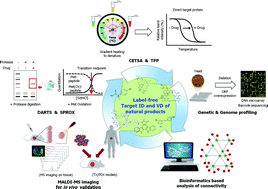
Nat. Prod. Rep., 2016,33, 719-730
https://doi.org/10.1039/C5NP00107B
Photo-cross-linked small-molecule affinity matrix as a tool for target identification of bioactive small molecules
This review describes the status of the photo-cross-linked small-molecule affinity matrix while providing a useful tutorial for academic and industrial chemical biologists who are involved or interested in drug target identification.
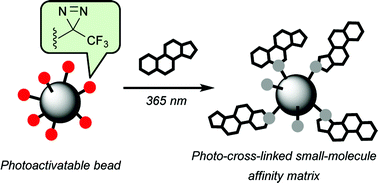
Nat. Prod. Rep., 2016,33, 709-718
https://doi.org/10.1039/C5NP00117J
Strategies for target identification of antimicrobial natural products
Despite a pervasive decline in natural product research at many pharmaceutical companies over the last two decades, natural products have undeniably been a prolific and unsurpassed source for new lead antibacterial compounds.
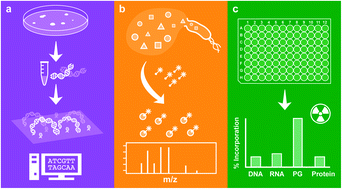
Nat. Prod. Rep., 2016,33, 668-680
https://doi.org/10.1039/C5NP00127G
Target identification by image analysis
Biologically active compounds induce phenotypic changes in target cells, which can be used to predict their modes of action. Such changes were initially detected by a visual inspection of images, while recent studies are based on high content analysis (HCA) methods using automated microscopy and analysis software.
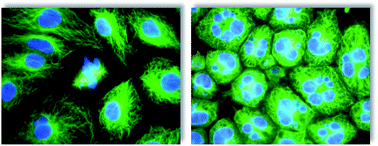
Nat. Prod. Rep., 2016,33, 655-667
https://doi.org/10.1039/C5NP00113G
About this collection
Natural Product Reports is delighted to present a themed issue dedicated to strategies for cellular target identification of natural products.
The incredible information content of bioactive natural products, revealed in their ability to interact in a highly selective manner with often one or just a few cellular targets in the vast proteome and genome of human cells, continues to profoundly impact basic cell biology and drug discovery. Propelled by remarkable advances in synthetic chemistry, analytical chemistry, bioinformatics, and biology (various ‘omics’), the timeframe required for a natural product to be coupled to its cellular target(s) and also for identification of the minimal pharmacophore has continued to decrease. Guest-edited by Professors Daniel Romo and Jun O. Liu this themed issue covers some of the exciting advances being made toward coupling natural products to their cellular receptors that in turn impacts cell biology and drug discovery.
Articles in this web themed issue will be added below as soon as possible after they are published. Please return to this page frequently to see the collection grow in the run up to the final issue publication.